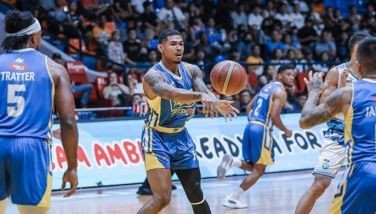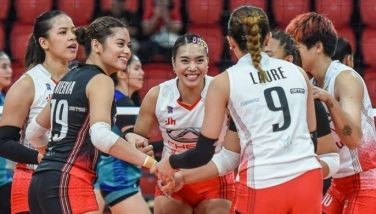Women fight for equality
Tennis world number one Novak Djokovic beat a hasty turnaround and apologized profusely for comments made against women’s equality in sports. After a hail of criticism, including a browbeating from women’s number one Serena Williams, Djokovic met with tennis legends Chris Evert and Billie Jean King, and explained that he is for equality in all aspects of the sport. King, a staunch advocate for women’s rights for over half a century, famously beat retired men’s professional player Bobby Riggs in the televised “Battle of the Sexes” in the 1970’s. This also came on the heels of protests over pay inequality by the US women’s soccer team and other women’s sports groups, which has rekindled this discussion.
In February, Australia’s federal sports minister Sussan Ley with the help of Australian Sports Commission chairman John Wylie, challenged the policy which gives different levels of travel and accommodation to male and female athletes. One example of discrimination was when male Australian athletes flew to the London Olympics in business class while their female counterparts were in economy, something unheard of even in countries like the Philippines. The Australian government sports officials have written 30 of their sports organizations, warning them that the disbursement of over $134 million in public funds will now be conditional on gender equality.
Research published by the BBC in 2014 revealed that men get paid more in 30 percent more sports than women, and the disparities in those sports are alarmingly large. Studying data from 56 global sports, the BBC learned that, of 35 sports that pay prize money, 25 paid equally to men and women, while 10 did not. Fourteen sports, including rugby union and hockey, did not pay any prize money at all. Five sports did not provide information for the research, and men and women compete alongside each other in horse racing and equestrian. Athletics, bowls, skating, marathons, shooting, tennis and volleyball have all been paying equal prize money to men and women since before 2004. Since then, nine more sports have started doing so, as well. Diving, sailing, taekwondo, windsurfing and some cycling events started paying equally in the early 2010’s.
For some, it is the amounts that are incredibly different. The 2014 World Cup champion German men’s team supposedly received $33 million more than the three-time US women’s World Cup champion team. The world’s highest-paid male footballers receive about one hundred times (yes, one hundred times) the amount of salaries paid to the best female football players. The only mitigating factor is that women’s players earn a bigger proportion of their income from advertising and endorsements. But the operative word there is proportion. Even with all those ancillary revenues, they are still earning far less overall. The only other difference is that men are most often on the cover of Sports Illustrated except for the swimsuit edition, although that is considered more of a negative than a positive by women’s groups.
According to data published by Feminist Majority Foundation (feminist.org), women and girls who participate in sports beginning in school have higher grades and lower dropout rates than students who don’t, are less likely to use drugs or get pregnant early, and are more likely to graduate from college. They also learn skills that will help them throughout their lives. Most of those benefits mentioned are also reaped by boys and men who discover competitive sports at school ages.
The website also said that in the US, male college athletes receive 36 percent more scholarship dollars than female college athletes studying in NCAA member institutions. Men’s college athletics programs also receive more money than the women’s for scholarships, recruiting, head coaches’ salaries and operating expenses. Lastly, men have substantially more employment opportunities than women in college sports. Whereas women account for just 16.9 percent of athletic directors and 44 percent of head coaches of women’s teams, 2 percent of the head coaches of men’s teams and 27.8 percent of the full time athletic trainers surveyed, men get the lion’s share of those prestigious positions, equal qualifications notwithstanding. Back in 1972, the law now known as Title IX imposed equal access to sports training and facilities for women in schools all over the United States, however, to this day, the spirit of the law has clearly not been followed to the letter, and no educational institution has lost any federal funding as a consequence of this, though the law is quite explicit about it.
For comparison, in the US workplace, women receive an average of 78 percent of what men earn, according to a study by the American Association of University Women. African-American women in particular earn about 68 percent, while Hispanic women receive only about 54 percent.
Now, what about the Philippines?
Women’s sports is an emerging force in Philippine sports as a whole. At the collegiate level and on national teams, more and more female athletes are becoming recognizable and are sought-after endorsers of commercial women’s products. They generally come from volleyball, taekwondo, tennis and golf. In terms of the oldest college leagues like the UAAP and NCAA, volleyball is a mandatory sport for all member schools, so there is a semblance of equality there. But we cannot escape the fact that women’s volleyball and even cheerleading have only risen in popularity in recent years, thanks to a confluence of circumstances. Both the talent level and media exposure have seen a big rise in recent years, thanks also to advertisers who decided to take long-term risks on traditional and beach volleyball. However, one sad fact remains: female athletes are still marketed and merchandised for their looks to a degree that male athletes are not. In the Philippines, female athletes appear in TV plugs and commercials in full make-up, looking noticeably different than they do on the playing court, on purpose. Given the drive to treat them as equals, this should be unnecessary, and may be considered a form of objectifying women.
At the professional level, there is hardly anything to talk about. Motocross does not discriminate between male and female winners in terms of prize money, and in fact, the youngest age groups mix boys and girls together. Bowling tournaments also have parity in pay. For female pro billiards players, boxers, mixed martial artists, golfers and other female athletes, they have to deal with pay inequality on an international level. So far, there has been more of a demand for male Filipino athletes to go overseas in pro boxing, basketball, football, rugby, and a few other sports. The women’s market is still developing, but volleyball seems poised to break down that wall.
Of course, market forces are what they are, and women’s sports still face the challenge of creating compelling rivalries and enduring heroes, as all sports do. The Philippine Basketball Association is more than 40 years old, and yet, no professional women’s basketball league exists in the Philippines. Then again, the men are batting for a spot in the Olympics and are one of the top two teams in Asia, while the women have yet to consistently dominate Southeast Asia. To be fair, there is funding for many women’s sports, but much of it is going into grassroots development, which means that the game is still a step behind the men’s. But when you think about it, the US women’s basketball team to the 1996 Atlanta Olympics had to endure a year of going around the world and playing against several men’s teams before it won the gold and provided the impetus for the WNBA as we know it today. And Serena Williams draws bigger crowds than many of her male counterparts. All it takes is a willingness to invest in the game, and patronage from those of us who genuinely want to see the sport grow.
- Latest
- Trending































